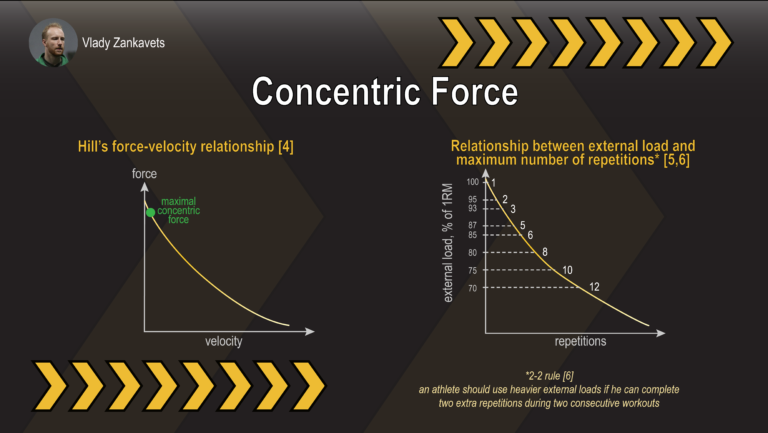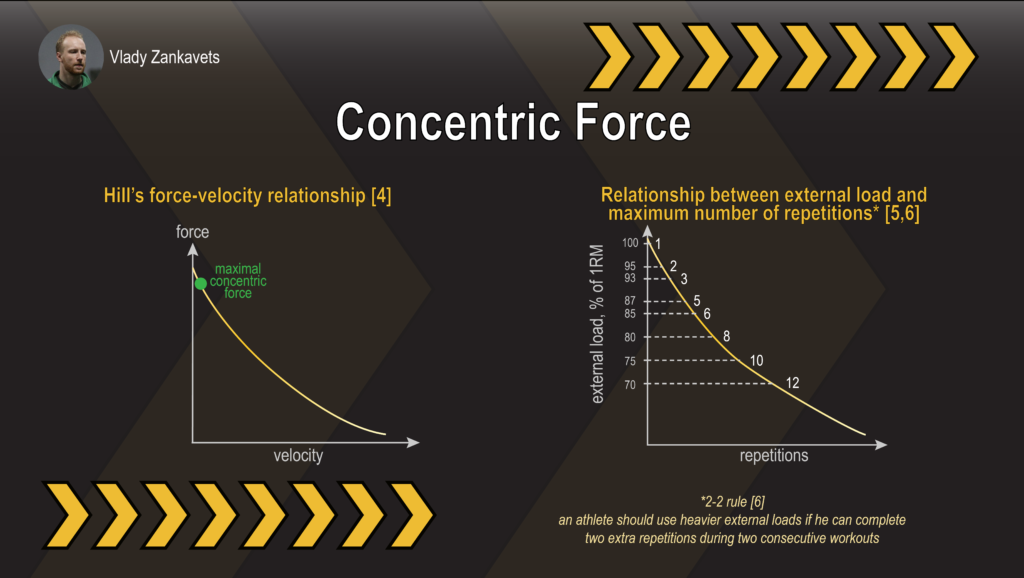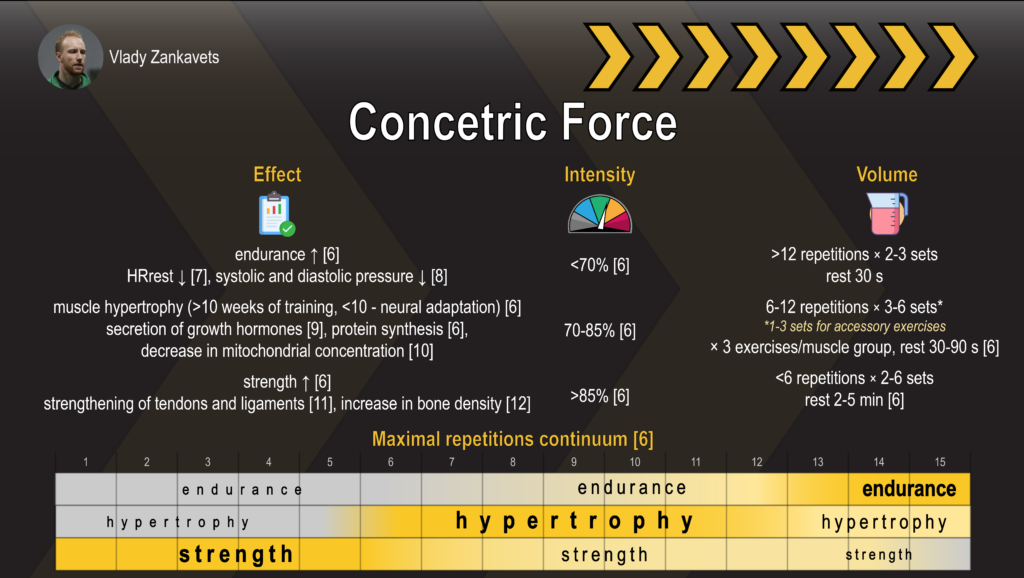
💪🏻As is known, there are three types of muscle effort (forces):
concentric (the muscle shortens);
isometric (the muscle length does not change or changes slightly);
eccentric (the muscle lengthens).
When performing the absolute majority of actions, muscles create efforts in all three modes. At the same time, in the training process, you can shift the emphasis to one or another mode in order to more effectively achieve the desired adaptations. Let's start with the concentric force.
Concentric force
A feature of concentric efforts is the inverse force-velocity relationship (figure on the left) [1]. The higher the velocity, the less force can be developed, and vice versa.

This relationship formed the basis of the velocity-based training (VBT), i.e., to achieve desired adaptations, external weights are selected to maintain the required speed of movement. Instant feedback on movement velocity allows selection of the optimal weight depending on the current state of the athlete [2], and monitoring the speed drop from repetition to repetition allows individualization of the load volume [3]:
🟢 Intensity 0-20% - Speed > 1.3 m/s;
🔵Intensity 30-40% - Speed 1.0-1.3 m/s;
🟡Intensity 50-60% - Speed 0.75-1.0 m/s;
🟠Intensity 70-80% - Speed 0.5-0.75 m/s;
🔴Intensity 90-100% - Speed < 0.5 m/s.
In addition, there is an inverse relationship between the external load and the maximum number of repetitions that can be performed with it (figure on the right) [3, 4]. Performance practitioners are advised to remember this chart, as it allows them to make decisions very quickly and calculate the load required for the athlete when there are no electronic devices at hand and the training process is not going according to the initial plan.

Thank you!
References:
1.Hill AV. The heat of shortening and the dynamic constants of muscle. Proc R Soc Lon Ser B 126:612-745 (1938).
2.Richter, E. Velocity-based training chart & zones. SimpliFaster [Electronic source]. Mode of access: https://lnkd.in/eTs2MwG8
3.Weakley, J, et al. Velocity-based training: from theory to application. Strength Cond J 43(2): 31-49, 2021. doi: 10.1519/SSC.0000000000000560
4.Матвеев ЛП. Теория и методика физической культуры. М: Физкультура и спорт, 543 с. (1991).
5.Essentials of strength training and conditioning. NSCA; GG Haff, NT Triplett, editors. IL: Human Kinetics, 735 p. (2015).